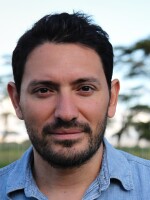When the Great Recession kicked off in 2008, the Federal Reserve announced a stimulus program that bought up bonds by the trillions.
In a symbolic move that underlines the confidence the Fed has in the U.S. economy, today the Federal Open Market Committee said it was staying the course and ending the third round of economic stimulus, known as quantitative easing.
In a statement the FOMC explained:
"The Committee judges that there has been a substantial improvement in the outlook for the labor market since the inception of its current asset purchase program. Moreover, the Committee continues to see sufficient underlying strength in the broader economy to support ongoing progress toward maximum employment in a context of price stability. Accordingly, the Committee decided to conclude its asset purchase program this month."
As expected, the Federal Reserve also kept its benchmark short-term rate at near zero. According to the statement, the Fed expects to keep that rate at the historic low for "a considerable time."
But giving itself some wiggle room, the Fed said:
"However, if incoming information indicates faster progress toward the Committee's employment and inflation objectives than the Committee now expects, then increases in the target range for the federal funds rate are likely to occur sooner than currently anticipated."
"Chair Janet Yellen is completing two years of bond purchases that started under her predecessor, Ben S. Bernanke, as the Fed nears its goal for full employment. She must now chart a course toward the first interest-rate increase since 2006 while confronting risks from a slowing global economy and declining inflation. The FOMC repeated it will consider a wide range of information in deciding when to raise the federal funds rate, which has been held near zero since December 2008. Most Fed officials expect to raise the rate next year, according to projections released last month.
"The Fed said it will continue reinvesting proceeds from a balance sheet that swelled to a record $4.48 trillion in the course of three rounds of so-called quantitative easing that started in November 2008 during the longest and deepest recession since the 1930s.
"The latest round was announced in September 2012, with monthly purchases of $85 billion in Treasuries and mortgage-backed securities. The Fed began a step-like reduction of purchases in January 2014, cutting them by $10 billion per meeting."
Copyright 2020 NPR. To see more, visit https://www.npr.org.


